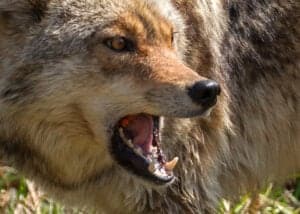I live in a rural area in dense woods paradoxically silent and filled with noise: birds chirping, wind rustling the American flag on the front porch, my dog barking at the UPS lady with decibels my watch tells me will damage my hearing. Yet, the most distinctive noise is one I often hear after dark: The coyote‘s eerie squeal, howl, shriek, scream, wail — I’m not quite sure how to describe it.
So, what exactly are those noises that coyotes make? Do they bark? Scream? Yelp? Just how many different sounds do they make, and what do those sounds mean? Let’s attempt to understand the 11 common sounds coyotes make. But first, what are some quick facts about the coyote?
The Enigmatic Coyote
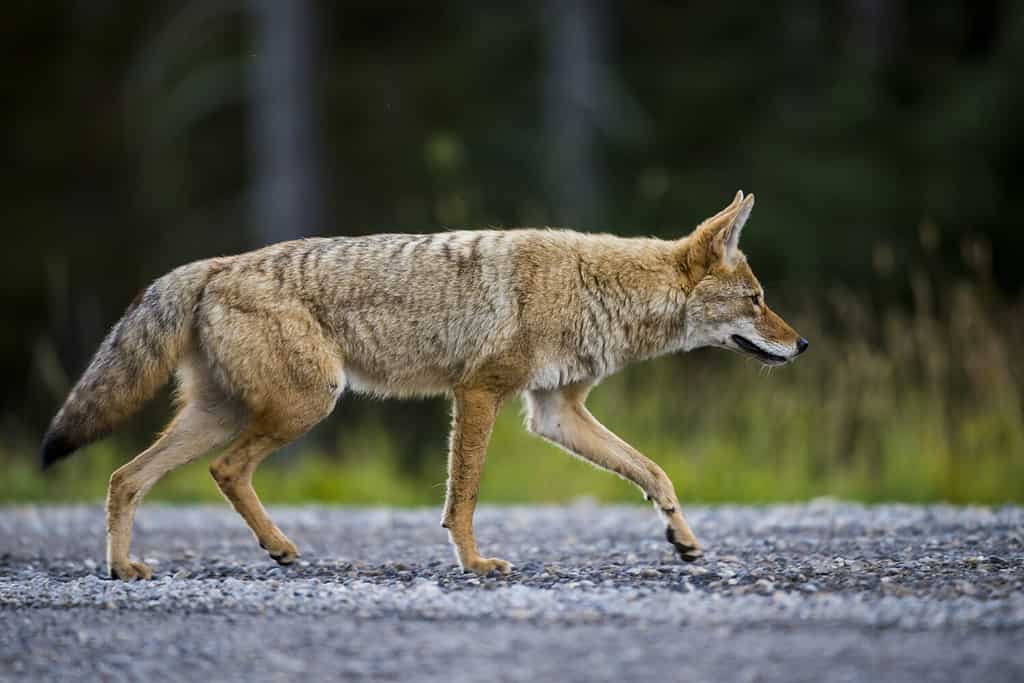
The sounds a coyote makes are based on a variety of factors.
©BGSmith/Shutterstock.com
The coyote is a medium-sized member of the dog family that grows to between 25 and 42 pounds. Usually grayish brown, coyotes can also be silverish gray to black. With its yellow eyes, pointed ears, and bushy tail, coyotes look similar to other animals. To wit, a coyote is often mistaken for a fox, gray wolf, German shepherd, or collie.
As far as habitat, coyotes prefer open areas like prairies and deserts. Still, they have adapted to thrive in suburban and urban environments because of an abundance of food and a lack of predators. Highly intelligent, coyotes are deeply territorial and very social, traveling not in “packs” but in family groups that are often referred to synonymously as packs.
Coyotes are wild animals who see humans as threats. As such, you should never attempt to domesticate this beast. They will remain aggressive toward you, and they will attack and kill your family pets.
As expert hunters, coyotes provide excellent rodent control. However, a coyote’s diet is not limited to meat. Omnivores, coyotes are known to feast on wild fruit and vegetables. Coyotes are loyal not only to their families but also to their partners, monogomously mating for life.
Additionally, these couples parent their offspring together, with litters ranging from a single pup up to 19. As the mother weans her coyote pups, both parents supply their young nourishment by feeding them regurgitated food.
1. Growl
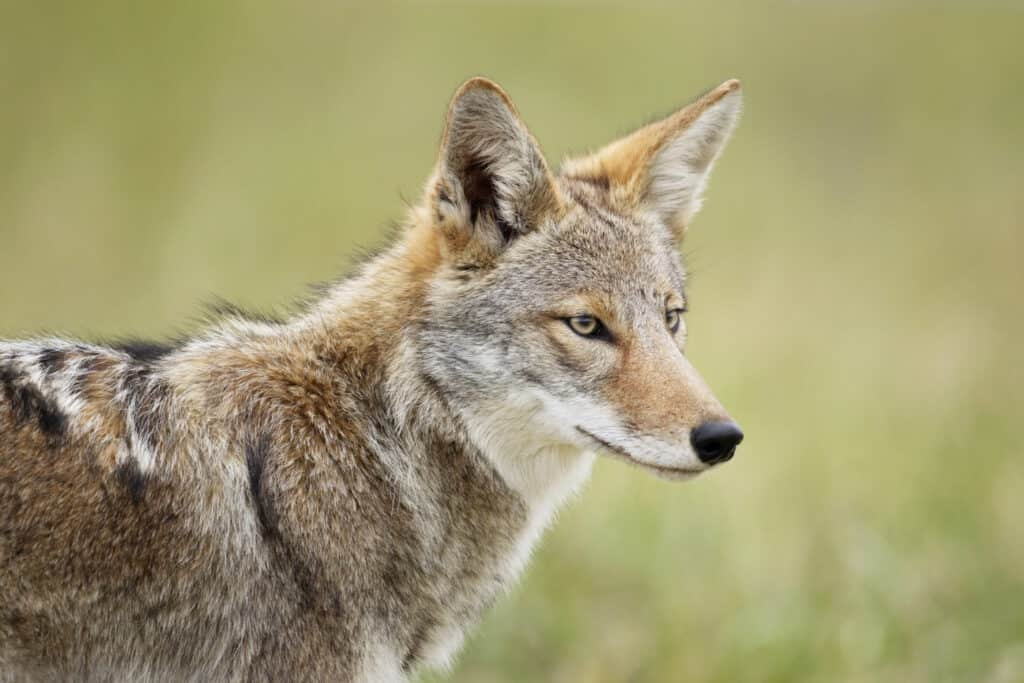
Coyotes communicate according to their situation and emotions.
©Paul Tessier/Shutterstock.com
A coyote’s growl signals a threat, whether to an animal or a human or to warn his pack of impending danger. They are low, raspy sounds that can intensify in volume and pitch as the need for the warning escalates.
2. Woof
When coyotes themselves feel threatened, they make this low-intensity, short-ranged dog sound.
3. Snarl
Similar to the growl but not as intense, a coyote’s snarl sounds more like an angry cat than a dog.
4. Huff
Coyotes make these high-intensity puffs of air through their noses and mouths when they feel threatened. As with many of the coyote’s common noises, the huff is meant to ward off potential peril.
5. Grunt
Similar to yet a bit more audible than the huff, coyotes grunt to signal displeasure. The grunt sometimes foreshadows a barking episode as well. As with many domesticated dogs, the grunt sounds like the animal is trying to determine whether or not to full-on bark or howl.
6. Bark
To answer the initial question set forth, yes, coyotes do bark! The noise sounds much like a dog’s bark. As with dogs, sometimes a coyote’s bark signals a warning, demands attention, establishes territory, alerts danger or displays extreme anger. As with any noise the coyote makes, barks deliver specific communications based on the situation.
7. Howl
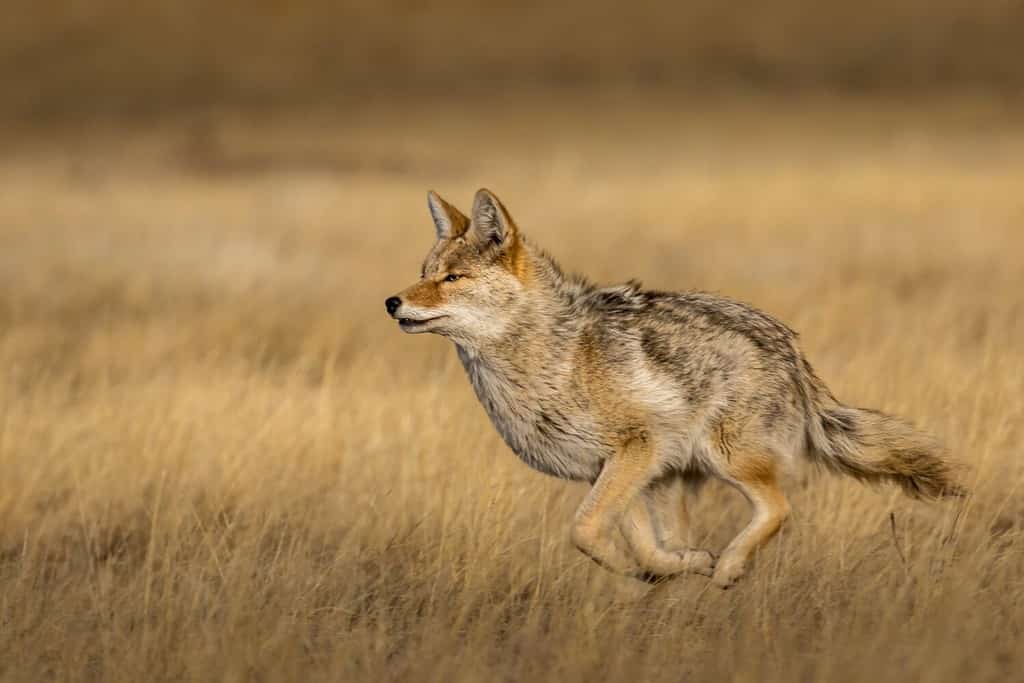
Coyotes possess varying howls for different purposes.
©Dennis Laughlin/Shutterstock.com
Howling is the coyote’s most recognizable sound, and for good reason. Not only does the coyote produce those blood-curdling howls that send me quickly indoors at night, but it also produces different howls for multiple reasons.
Some howls are a group activity, and one of the chief reasons coyotes howl is to assemble their group, especially after a hunt. The group also promotes bonding within a coyote’s family and establishes its territory. By howling as a unit, the coyotes create a kind of virtual barricade denoting their status as a content clan.
One of the coyote’s more endearing nicknames is “song dog,” and its howls and their variations are the main reason why. The archetypical lone howl is the distinctive footprint of the coyote. Because coyotes are social animals, the lone howl usually signals an attempt to locate the group. Therefore, lone howls often produce multiple lone-howl responses from the individual group members.
An interesting aspect of lone-howl communication is the “beau geste effect.” The beau geste effect is when an alpha male and female coyote pair howl back and forth at each other. It’s an acoustic illusion of sorts, where the variety of sounds produced by two coyotes get distorted, making the two sound like seven or eight.
These individual and coupled “sing-songy” howls have distinctive timbres: A coyote’s higher-pitched, more peaceful howls denote a friendly contentedness. As well, because coyotes may be active at any time, you may hear these “songs” at any time of day or night. Another example of the “coupled” howl is the communication between an alpha and a beta male (an alpha male’s progeny from previous years).
Conversely, an agitated or distressed howl is an urgent howl based on negative circumstances. A coyote might be threatened by a dog, another animal, or even a human. An obvious reason for a distressed howl is a coyote experiencing physical pain. A coyote may begin a distress howl with a bark that evolves into that high-pitched, familiar coyote cry. Finally, a coyote’s challenge howl is lower pitched and more aggressive.
Home-based alpha males may use a challenge howl to discipline a younger male or thwart weaker coyotes attempting to challenge them. As well, lone coyotes looking for a group to dominate might challenge the alpha male of that family.
8. Yelp
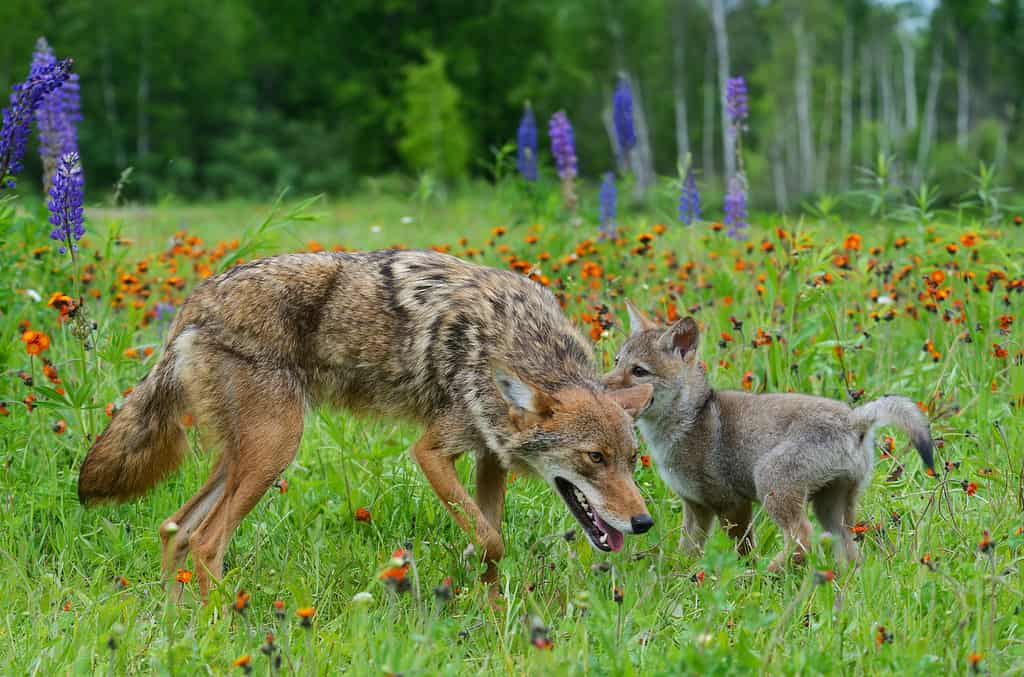
A coyote’s yelp signals distress.
©Betty4240/iStock via Getty Images
Depending on the age of the coyote and the situation, coyotes’ yelps signify myriad communication. A high-energy response of being startled, yelps broadcast an unpleasant surprise. In adult coyotes, yelps are sometimes followed by an attack, depending on the circumstances. In contrast, coyote puppy yelps are distress signals that communicate hunger, pain, or impending danger.
9. Whine
Coyotes’ whines are high-intensity and short-range, and they convey an array of emotions, including submission, pain, hunger, and distress. They are generally a milder version of the yelp.
10. Yip
Yips serve mainly as communication among the coyote family/group. Contrasted with a whine or howl, yips are shorter, staccato-sounding tones with a unique variety of timbres, pitches, and inflections. Coyotes can recognize the personal intonations of the individuals in their pack, similar to how humans can recognize particular voices they know well.
11. Bay
Finally, a bay is similar to a howling sound, but it contains more variations and comes in shorter spurts. It is a more soulful sound, sometimes referred to as a combination of a howl and a yodel. Interestingly, coyotes often bay at the sound of sirens. With the acute ability to discern frequencies like a canine, coyotes bay at sirens because they believe they are communicating with one of their own.
Final Thoughts
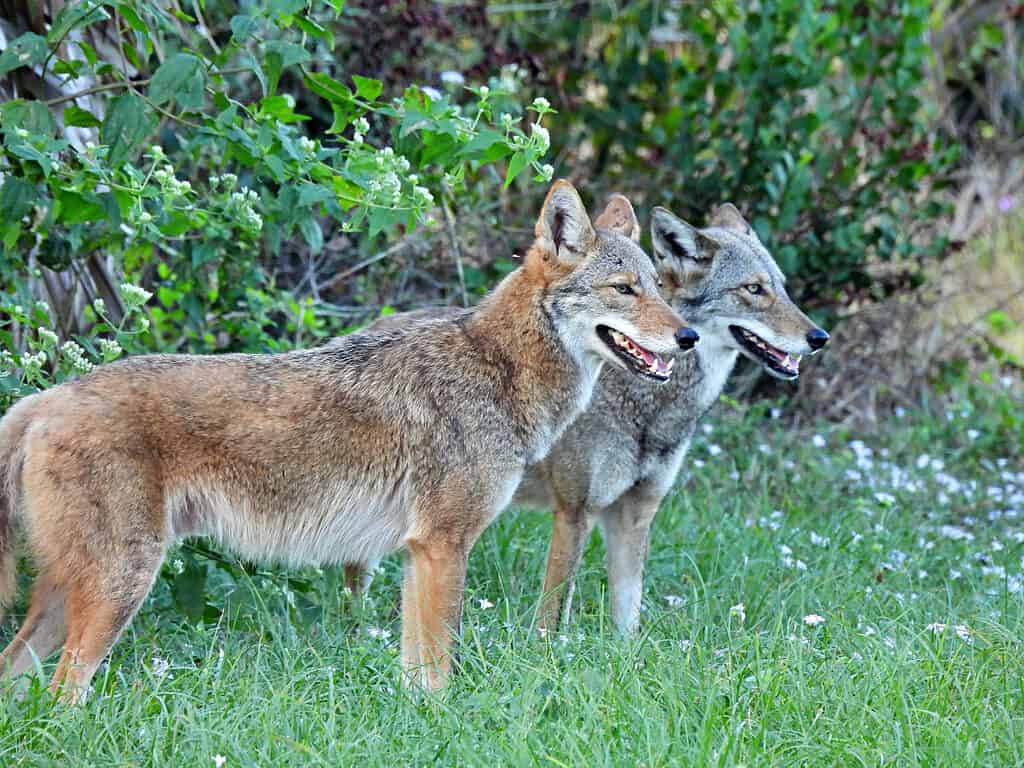
The fascinating sounds of the coyote reflect its emotions, threat assessment, personality, and group dynamics.
©iStock.com/passion4nature
Though it’s increasingly studied by wildlife biologists, zoologists, and scientists, the complex communication system of coyotes continues to confound and impress those vested in this niche. Their intonations vary among geographic regions, much like the dialects of humans. When we better understand the purposes of the coyotes’ common sounds, we better understand this compelling animal.
The photo featured at the top of this post is © Warren Metcalf/Shutterstock.com
Thank you for reading! Have some feedback for us? Contact the AZ Animals editorial team.





